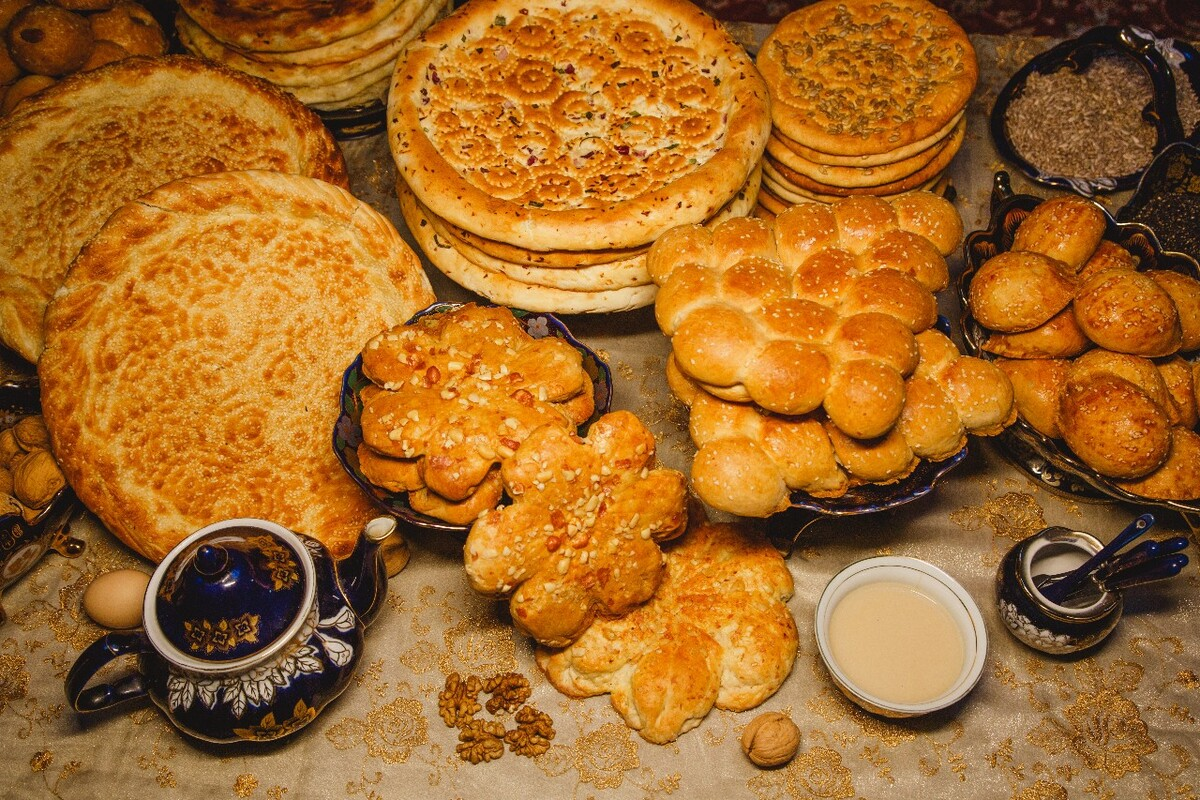
Xinjiang nang is a traditional pasta with a long history and unique characteristics, and it is one of the indispensable staple foods in the daily life of people of all ethnic groups in Xinjiang. The following is a detailed introduction to nang:
1. Types of nang
Ordinary nang: the most common kind, thin in the middle, thick edge, surface pattern, golden crisp after baking.
Oil nang: Add cooking oil or sheep oil, taste more crisp.
Sesame Nang: The surface is covered with sesame seeds, and the aroma is rich.
OnionNang: Add onion seasoning, unique flavor.
Kumaqi nang: A large thick nang suitable for sharing with many people.
Sweet nang: Add raisins, honey or sugar to taste sweet.
2. Preparation method
Ingredients: flour, water, salt, yeast (or old noodles), some types will add oil, sesame, onion and so on.
Tools: Traditionally, naan (a kind of clay oven) is used, but modern families can also use an oven or pan.
Steps: Mix and ferment.
Roll into a round shape and press out the pattern with a nang needle or your fingers.
Sprinkle with toppings such as sesame seeds or Onions.
3. Cultural significance
Nang in Xinjiang is not only food, but also a symbol of reunion, sharing and hospitality.
Traditional festivals, weddings and other important occasions are indispensable nang.
There is a saying that is said"Nang is the food of the poor and the dim sum of the rich", which reflects its universality.
4. Eating style
Serve as is, especially when fresh from the oven, outside is crispy and inside is soft .
With milk tea, mutton soup, pilaf and so on.
It can be dipped in honey, jam, or inserted into roast meat and vegetables.
5. Keep and carry
Nang is less water, storage is easy, suitable for nomadic people to carry.
It can be stored in a dry place for several days, and can be restored to taste after hardening.
6.Trivia
The Uyghur word for "nang" is the same origin as "bread" in Persian and Hindi.
There is a saying in Xinjiang that is "Nang is faith and nang is life."
Whether it is the nang shop on the street or the family table, nang is a taste symbol of Xinjiang culture. If you have the chance to come to Xinjiang, be sure to taste the hot nang just baked!


